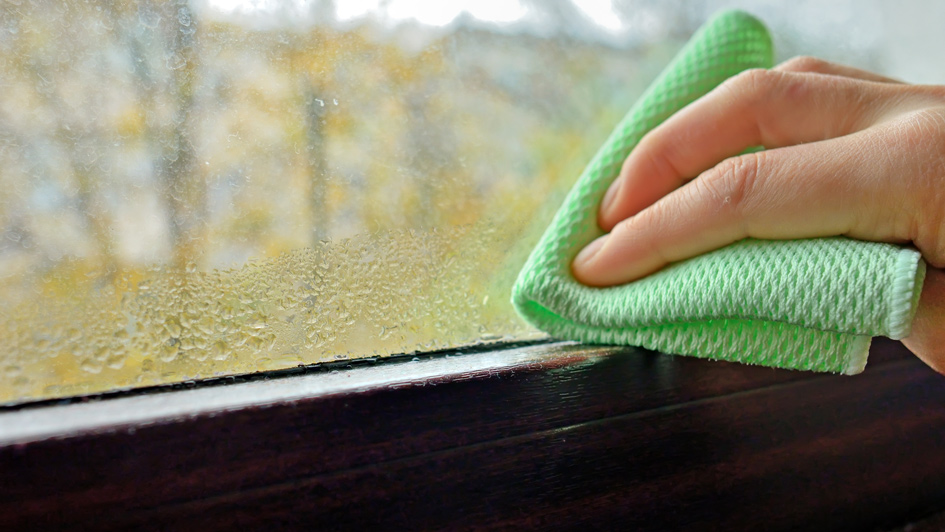
The windows throughout your home are a gateway to the outdoors, a way to let light in as you take in the view of your garden, yard or landscape. The last thing you would want to see is a sweaty window coated in a layer of condensation.
Not only are windows covered in condensation unappealing, they also can be a symptom of a more serious air-quality issue inside your home. Luckily, there’s numerous things you can attempt to correct the problem.
What Causes Condensation in Windows
Condensation on the inside of windows is formed by the humid warm air inside your home hitting the colder surface of the windows. It’s especially common in the winter when it’s much colder outside than it is in your home.
Inside Moisture vs. In Between Panes
When dealing with condensation, it’s necessary to know the distinction between moisture on the inside of your windows versus moisture in between the windowpanes. One is an indoor air quality issue and the other is a window issue.
- Moisture within a window is produced from the warm damp air throughout your home forming against the glass.
- The moisture you see between windowpanes is formed when the window seal fails and moisture seeps between the two panes of glass, in which case the window should be repaired or replaced.
- Condensation in the windows isn’t a window situation and can instead be solved by adjusting the humidity across your home. Different things generate humidity throughout a home, like showers, cooking, bathing or even breathing.
Why Condensation on Windows Could Mean a Problem
Though you might think condensation inside your windows is a cosmetic concern, it may also be indicating your home has excess humidity. If this is in fact the case, water may also be accumulating on window frames, cold walls or other surfaces. Even a small film of water can encourage wood surfaces to mildew or rot over time, promoting the growth of mildew or mold.
How to Reduce Humidity Throughout Your Home
Fortunately there are various options for removing moisture from the air throughout your home.
If you have a humidifier active in your home – whether it be a smaller unit or a whole-house humidifier – lower it further so the humidity inside your home decreases.
If you don’t have a humidifier active and your home’s humidity level is excessive, think about getting a dehumidifier. While humidifiers adds moisture in your home so the air doesn’t dry out, a dehumidifier draws excess moisture out of the air.
Compact, portable dehumidifiers can absorb the water from one room. However, portable units require clearing water trays and generally service a somewhat limited area. A whole-house dehumidifier will extract moisture throughout your entire home.
Whole-house dehumidifier systems are managed by a humidistat, which allows you to set a humidity level the same like you would choose a temperature with your thermostat. The unit will begin running automatically when the humidity level exceeds the set level. These systems collaborate with your home’s HVAC system, so you will receive the best results if you contact skilled professionals for whole-house dehumidifier installation Yukon.
Alternative Ways to Decrease Condensation on Windows
- Exhaust fans. Adding exhaust fans near humidity hotspots including the bathroom, laundry room or above the oven can help by drawing the warm, moist air from these areas out of your home before it can increase the humidity level inside your home.
- Ceiling fans. Running ceiling fans can also keep air flowing throughout the home so humid air doesn’t get caught up in one spot.
- Open window treatments. Pulling open the blinds or drapes can decrease condensation by stopping the humid air from being stuck against the windowpane.
By decreasing humidity in your home and circulating air throughout your home, you can enjoy clear, moisture-free windows even in the middle of the winter.

